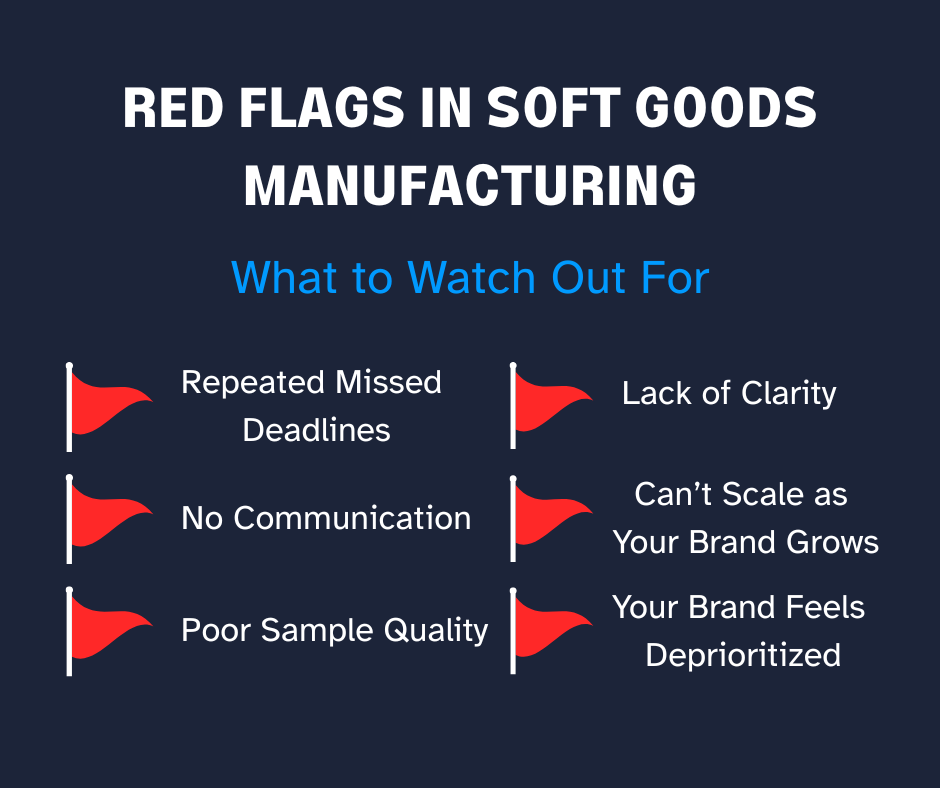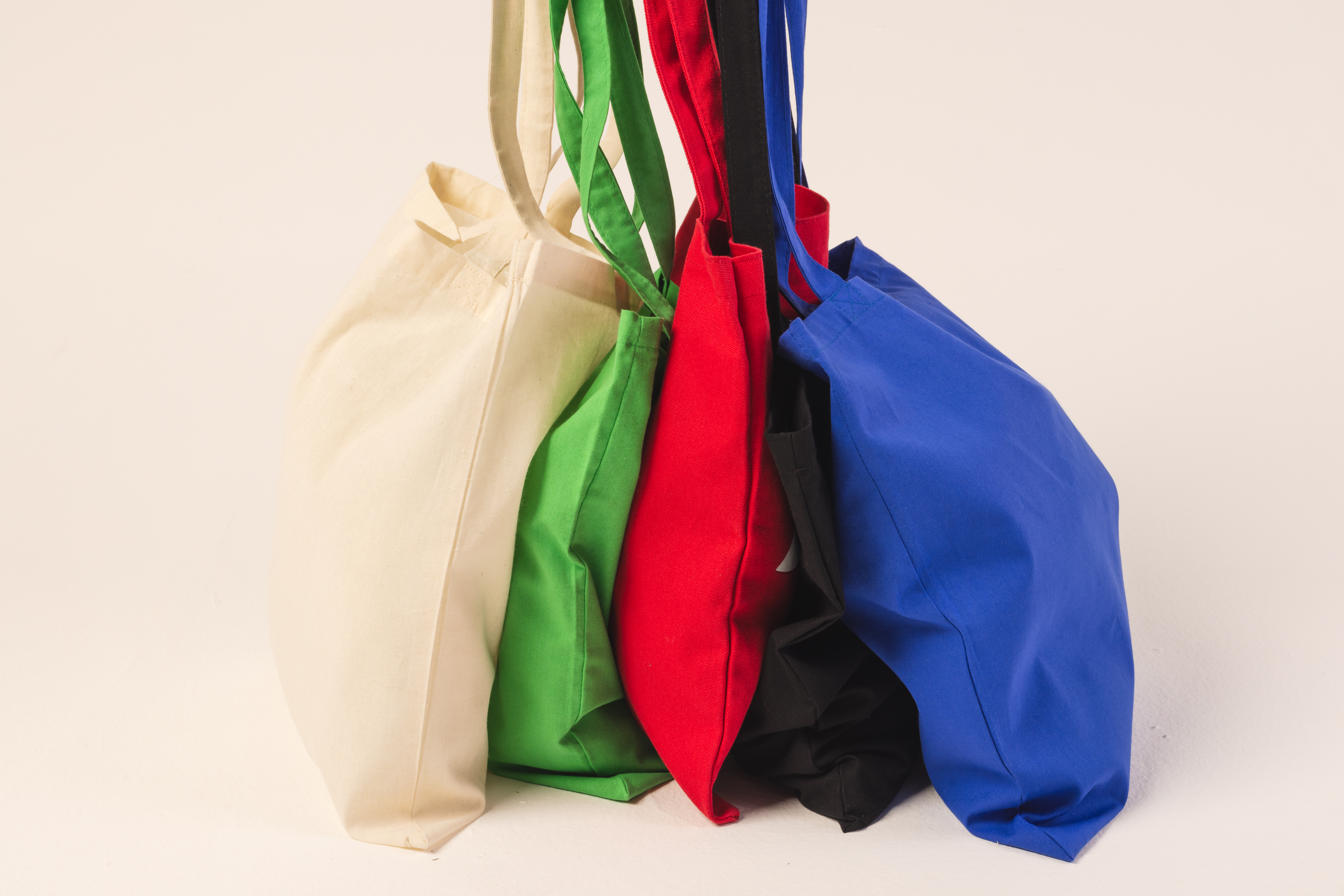The Hidden Costs of Switching Manufacturers Mid-Project
If you’re experiencing a problem in your soft goods manufacturing, changing manufacturers may seem like the easiest and fastest way to fix the problem. However, this can come with a whole new set of issues. Whether you’re dealing with delays, miscommunication, or poor sample quality, the urge to cut ties with your current factory is understandable. Before you scrap the contract, it is essential to understand the hidden costs associated with switching manufacturers mid-project. Here’s what every soft goods brand should consider before making the change.
When does switching manufacturers seem necessary?
Switching factories can be justified. Here are some common red flags that lead brands to consider a new manufacturing partner:
- Repeated missed deadlines with no clear resolution
- Inconsistent communication or complete radio silence
- Poor sample quality that doesn’t improve after revisions
- Mismatched expectations on pricing, materials, or capabilities
- A vendor that deprioritizes your account or can’t scale with your brand
These are serious concerns, and if they’re happening to you, it makes sense to explore your options. But switching isn’t as simple as forwarding your tech pack to someone new. Here’s why.

Hidden Costs You May Not Expect
Unexpected costs might include the following.
Lost Time on Redevelopment
One of the biggest hidden costs is starting over, even if you already have samples, files, or patterns.
Every manufacturer has its own processes, machines, tolerances, and sourcing preferences. Your new partner may need to adjust construction methods or rework design details to fit their workflow.
This can mean:
- Resampling from scratch
- Revising or rebuilding your tech pack
- Time spent aligning materials and stitching techniques
- Delayed production timelines (weeks or even months)
Tip: When switching, expect at least one new sampling round, often two.
Duplicated Costs
Even if you’ve already paid for development, those costs don’t always transfer to a new vendor.
You may face:
- New sample fees
- Duplicated pattern or spec development
- Additional sourcing or tooling costs
- Potential loss of deposits or prepaid materials
Bottom line: You could end up paying twice for the same phase of work.
IP and Material Ownership Confusion
Who owns your tech pack, patterns, or molds? If you didn’t clarify that in writing, your original factory might not release them, or may consider them proprietary.
Before switching, ask:
- Was IP ownership outlined in your original contract or NDA?
- Will the manufacturer share design files or samples if you move on?
- Do you have full copies of all specs, patterns, and BOMs?
If the handoff isn’t smooth, you may be forced to recreate assets from scratch, costing time and money.
Production Delays
Changing manufacturers midstream often resets your production timeline.
Even with a more responsive or capable partner, your new manufacturer will need time to:
- Understand your product
- Order materials
- Sample and refine
- Schedule production into their calendar
The impact:
- Launch delays
- Missed preorder or wholesale commitments
- Disrupted sales forecasts or seasonal deadlines
Supply Chain Disruption
When you switch manufacturing partners, your sourcing pipeline may shift as well.
Common issues:
- Materials originally sourced through your previous factory may be inaccessible
- Moving manufacturers may mean new supply chain risks, like global geopolitical events
- Custom hardware or packaging may need to be re-specified
- You may need to meet new MOQs or pricing thresholds with different suppliers.
These factory adjustments can change everything about your production process and timeline.
Brand Risk and Quality Gaps
In soft goods manufacturing, small details matter. The slightest variation in stitch tension or fabric sourcing can cause major changes to the finished product.
Potential risks:
- Mixed quality across batches
- Customer complaints or returns
- Brand reputation damage
When production is fragmented, your end customer won’t blame the factory: they’ll blame the brand.
When is switching worth it?
Despite the risks, there are times when switching manufacturers mid-project is the right move. It may be necessary if:
- Your current factory is unresponsive or unreliable
- Sample quality is far below expectations
- The vendor can’t scale with your production needs
- You’re moving toward domestic manufacturing for speed, ethics, or oversight
- You’ve lost confidence in the working relationship
In these cases, the short-term costs of switching may be outweighed by long-term gains in quality, partnership, and product success.
How to Switch Smart: Managing the Transition
If you decide to move forward with a new manufacturing partner, here’s how to minimize disruption and set yourself up for success:
1. Collect All Documentation
- Final tech packs
- Pattern files (paper or digital)
- Bill of materials (BOM)
- Sample photos
- Construction notes and QA reports
The more you can give to your new manufacturer, the faster they can create products that meet your needs and expectations.
2. Be Transparent About Your Situation
Share what worked, what didn’t, and what’s already been approved. Let them know you’re mid-project so they can anticipate potential gaps.
3. Build in Extra Time
Even under ideal circumstances, onboarding a new factory midstream takes time. Plan for at least 4–6 additional weeks, especially if new sampling or sourcing is required.
4. Ask About Mid-Project Experience
Some manufacturers are well-versed in taking over projects that are partially complete. Ask how they evaluate incoming work and what steps they take to ensure a smooth transition.
Switching manufacturers mid-project can solve real problems, but it’s rarely simple. Before you move forward, weigh the hidden costs carefully: time, rework, lost materials, and brand consistency. If you do choose to switch, plan the transition strategically and work with a partner who understands the nuances of midstream production.
Partner with Softline Today!
Softline Brand Partners has helped dozens of brands recover momentum and relaunch successfully after stalled or troubled projects. If you’re considering a change, we’re ready to help you do it right.Talk to Softline Brand Partners about your next step.










